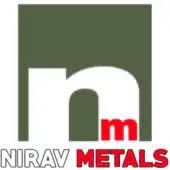A stainless-steel wire rod is a semi-finished product made from stainless steel that is typically produced in a hot-rolled or cold-drawn process. It is a long, cylindrical metal rod with a round cross-section, ranging in diameter from a few millimeters to several centimeters.
Stainless steel wire rods are commonly used as a raw material in various industries, including construction, automotive, manufacturing, aerospace, and electrical. They possess the corrosion-resistant properties of stainless steel and are known for their strength, durability, and versatility.
There are 2 forms of wire rods-
- Wire rod coils are rolled steel that are used for various applications in industries such as construction, automotive, manufacturing, and more. They are produced by hot rolling billets or ingots into long, cylindrical shapes with a circular cross-section. The properties of the wire rod, including its strength, ductility, and surface finish, make it suitable for these applications.
- Wire rod bars are a form of metal that is drawn from wire rod coils but has been further processed into straight bars. This process involves cutting, straightening, and possibly additional treatments to meet specific requirements.
Finishes-
Wire rods can undergo different types of finishes to enhance their surface properties, improve corrosion resistance, or meet specific aesthetic requirements. Here are some common finishes of wire rods:
- Black Finish: This finish is typically achieved by hot rolling the wire rod without any additional surface treatment. Black-finished wire rods are commonly used in applications where surface appearance is not a significant factor.
- Bright Finish (Export/Polished bright): Wire rods with a bright finish undergo additional surface treatments to achieve a polished, shiny appearance. This finish is obtained through processes such as mechanical polishing, electroplating, or electrochemical polishing. Bright finishes are often chosen for applications where aesthetics or decorative appeal are important.
Properties of Stainless-Steel wire rod-
Stainless Steel:
Stainless steel sheets are available in various grades, including austenitic, ferritic, and martensitic stainless steels. Austenitic stainless steels, such as the 300 series are the most commonly used grades due to their excellent corrosion resistance, high ductility, and good weldability. Ferritic stainless steels, such as 430, have lower corrosion resistance but offer higher resistance to stress corrosion cracking. Martensitic stainless steels, such as 410, have high strength and hardness but lower corrosion resistance.
Nickle alloys-
Nickel alloys are available in various compositions, including Monel, Inconel, and Hastelloy. These alloys have different properties, but they all share the common property of excellent corrosion resistance and high-temperature strength.
Inconel:
Inconel is a family of nickel-based alloys that offer exceptional resistance at high temperatures, corrosion, and oxidation. Inconel alloys are used in applications that require high temperatures and pressure resistance, such as gas turbine components, heat exchangers, and chemical processing equipment.
Hastelloy:
Hastelloy is a family of nickel-based alloys that have excellent corrosion resistance and high-temperature strength. Hastelloy’s are used in applications that require resistance to highly corrosive environments, such as chemical processing, oil and gas, and pulp and paper industries.
In conclusion, Stainless steel sheets, Nickel alloys, Inconel, and Hastelloy offer unique benefits that make them suitable for various applications. Each material has different compositions and properties that make them suitable for specific applications. It is essential to consider all the factors, including the environment, temperature, pressure, and chemical exposure, to choose the most appropriate material for the application.
Sizes- | All sizes available |
Thickness | All sizes available |
Width | All sizes available |
Length | As per requirement |
Type of slitting- |
Applications of wire rod-
- Construction and Architecture: They are utilized for reinforcing concrete structures, creating tension cables for suspension bridges, cable railings, and mesh panels for facades. Their strength, corrosion resistance, and aesthetic looks make them suitable for these applications.
- Automotive Industry: They are used in manufacturing exhaust systems, suspension springs, brake lines, and cables. Stainless steel wire rods provide the durability, heat resistance, and corrosion resistance required for these demanding applications.
- Aerospace and Defence: They are utilized in the production of aircraft cables, wire harnesses, fasteners, and structural components. Stainless steel wire rods offer high strength, corrosion resistance, and reliable performance in extreme environments.
- Industrial Equipment: They can be found in conveyor belts, sieves, filters, screens, and wire meshes used in the chemical, medical, food processing and mining industries. Stainless steel wire rods’ corrosion resistance, strength, and hygiene properties make them suitable for these applications.
- Medical Devices: Stainless steel wire rods are extensively used in the manufacturing of medical devices. They are used in surgical instruments, orthopedic implants, guide wires, catheters, and dental wires. Stainless steel’s corrosion resistance, biocompatibility, and strength make it a preferred material in the medical field.
- Food and Beverage Industry: Stainless steel wire rods are used in equipment and machinery for the food and beverage industry. Stainless steel’s corrosion resistance, hygienic properties, and ease of cleaning make it ideal for maintaining food safety standards.
- Electronics and Electrical Industry: They are employed in the manufacturing of conductive wires, heating elements, resistors, and electrical connectors. Stainless steel wire rods offer excellent electrical conductivity and high-temperature resistance.
